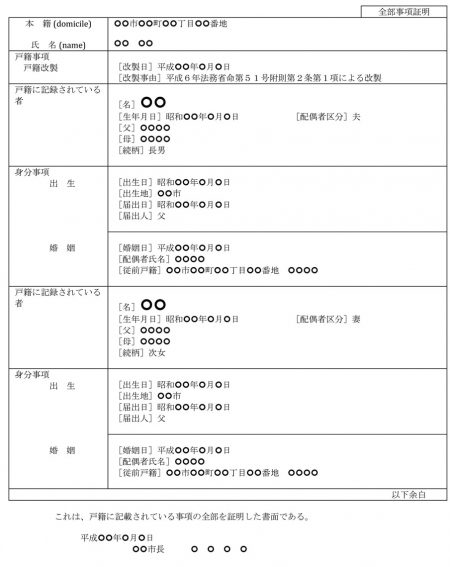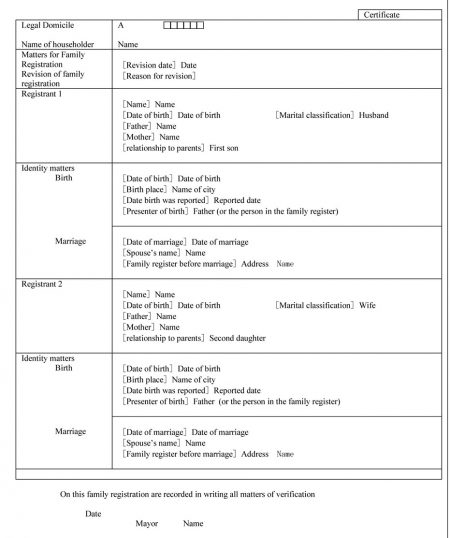Japanese Citizen Documentation System
by Japan PI

Juminhyo Residence Registry (住民票)
A Juminhyo (住民票) is a registry of current residential addresses maintained by local governments in Japan.
Japanese law requires each citizen to report his or her current address to the local authorities who compile the information for tax, national health insurance, and census purposes.
The Juminhyo is different from a Koseki, which is the formal record of a family’s history. When proof of residence is required, such as for opening a bank account or registering children at a local school district, one needs to obtain a copy of this record from the local city hall.
Once a Juminhyo has been registered with the local city hall, one can register for various social services including the national health insurance plan. Juminhyo registration is also required to officially register a certified seal (Inkan-Shomei), which functions as one’s official signature in Japan.
Who can obtain it?
- The person registered to the same Juminhyo record.
- Creditors or someone who has a legal reason to track the person.
- Attorneys, accountants, etc.


Kosek Family Registry (戸籍)
“Koseki” is an official document that every Japanese citizen has, and it plays a role of all birth, death, marriage and divorce certificates. To obtain the record, you must provide following information to the local city hall where the Koseki record is registered to:
- The Permanent Domicile (Honseki=本籍)
- The head of the family (Hittousha=筆頭者)
The Juminhyo registry (Residence registry) is different from Koseki registry. The Juminhyo records your current address, . The Koseki, or the family registry, is the system by which births, deaths, marriages and divorces of Japanese nationals are recorded. In some sense, it is a national identity registration, since Japanese public offices collect and maintain these detailed records about all Japanese citizens.
Each Koseki has a “Head of the family” as well as a permanent domicile (Honseki), which Koseki holders can decide with their preference. You must know both of the information to obtain a Koseki registry record. A Koseki is held at a city hall in the local town, city, or village where the Honseki is placed.
If an individual of the Koseki members marries or simply divides the Koseki from the head of the family, they create a new Koseki or enters another Koseki of others. In this situation, an old Koseki record will have a note of new permanent domicile and the name of the new head of the family of the former Koseki members.
Who can obtain it?
- The person registered to the same Juminhyo record.
- Creditors or someone who has a legal reason to track the person.
- Attorneys, accountants, etc.
Head of family or Hittousha 筆頭者
The head of the family, listed on the far right of the Koseki.
The Permanent Domicile or Honseki 本籍
This is the place where the Koseki record is registered. Though it is a form of address in Japan, we should better take it as just a referral key to get access to Koseki registry. It is the place one considers their true home, new home, the real home, birth place, or an important place in their family’s or genealogical past. But it can be set to anyplace in Japan.
The Honseki is usually slightly a little shorter than a real address, typically leaving out the final digit part. This decides which municipal government office controls the Koseki and you must claim your Koseki to the city hall where the Honseki (permanent domicile) is registered.
You can transfer your Honseki anywhere in Japan depending on your preference. Every time any transfer of Honseki or new marriage or divorce take place, contents of Koseki records are updated.
If you have no idea where the Honseki is, it is registered on Juminhyo residence registry record. However it is a big problem to obtain a Koseki record in a case we are assigned by a foreign individual who does not have a Juminhyo registration in Japan without any idea of the place of Honseki.

